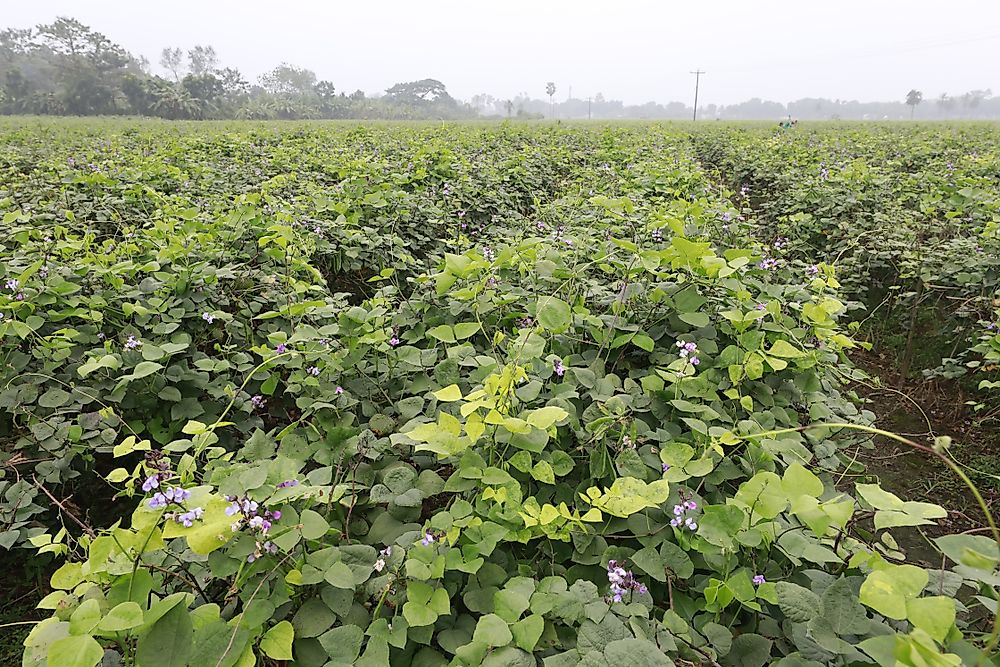What Are The Major Natural Resources Of Bangladesh?

Bangladesh is a developing country with vast quantities of natural resources that play a vital role in economic growth and diversification. These natural resources are either renewable or non-renewable of which most have been conserved such as coral reefs, islands, evergreen vegetation and mangrove forests, and wildlife such as the rare species of tigers z- the Bengal tigers. Bangladesh is small country with a rapidly growing population that has increased pressure on its natural resources of which the major ones are discussed below.
Bangladesh's Major Natural Resources
Forest Resources
The country is covered with evergreen highlands in northeastern and southeastern regions with natural deciduous forests. The Sundarbans consists the largest forest reserve in the country, taking a large share of nearly 40 percent of the total forest cover in Bangladesh. The total land covered by forests is about 20 percent of the main land. Efforts are being made to safeguard the forests from population pressure through enactment of laws, educating the public on conservation measures and adopting agro-forestry policies to maximize food production as well as conserve trees. Valuable tree species native to Bangladesh forests include the Passur, Baen, Sundari, and Keora.
Natural Gas
Natural gas is a major source of energy for Bangladesh where mining began in the 19th century and contributes to more than 70% of commercial energy in the country. It is the 7th largest natural gas producer in Asia with 26 gas fields of production producing about 2,700 million cubic feet of natural gas daily. Apart from oil production, the country also produces other natural resources such as coal, petroleum, and timber that provide energy for consumption domestically and industrially. Like many other natural resources, overexploitation leads to exhaustion which poses the main threat to natural gas reserves. In addition, the lack of proper skilled personnel to mine natural gas results in wastage and loss. The government has to import skilled labor from mining companies in developed nations such as the USA and Japan.
Fisheries
The fisheries resource in Bangladesh comprises of marine sources such as the sea and inland resources like ponds, rivers and lakes which take the major percentage of fish production in the country. A variety of climatic conditions favor the fishing patterns, fish farming, and general growth of the fishing industry. Bangladeshis are the biggest consumers of fish-based animal protein based on the highest per capita income and culture with 60% protein coming from fish supplies. Bangladesh is among the leading inland fisheries producers, producing more than 2.8 million tons of fish every year. It possesses plenty of prawns, lobsters, turtles, mollusks, and other fishery resources in the vast rivers and inland water bodies. The fishing industry provides about 1.4 million job opportunities to citizens of Bangladesh which helps lift the economy. In addition, fisheries contribute to foreign exchange earnings and an overall nutritious diet to the locals.
Land Resources
The land resource in Bangladesh is scarce and in high demand largely because of the population growth which is quite rapid. Major tracts of land are found on the plains of Bengal delta between the rivers Brahmaputra and the Ganges exposing most of the land to annual flooding from the heavy rains between May and November. Many nutrient-rich alluvial soils are deposited after flooding, as a result Bangladesh has one of the most fertile soils in the world.
Heavy rainfall and long growing season boost the fertility of Bangladesh’s lands. This in turn increases agricultural yields of wheat, maize, sugarcane, cotton, linseed, repressed mustard, and rice. Bangladesh is one of the largest producers of rice, jute, and other agricultural products in the world. This has stabilized the income sources of the government hence able to plan for its citizens. The government has embraced sustainable agricultural land management through heavy reliance on modern agriculture.
Water Resources
Water is a unique resource important for survival and balance of the ecological processes in the environment. Modern agricultural technology can produce higher agricultural yields through increased and efficient use of water.
Major sources of water in Bangladesh are ground water stored in the impermeable rocks, stream flow and rainfall water. Storm water plays a major role in creating the hydrological cycle which ensures a constant supply of water through all seasons. Stream flow water comes from the major rivers such as the Ganges, Meghna, and the Brahmaputra and plays a major role in balancing the ecological, social and cultural structure of the inhabitants. These sources provide water for farming through irrigation, domestic use and industrial application, fisheries, transportation means through navigable rivers and lakes, electricity production, and recreation.
To aid in the conservation of the water resources, the government of Bangladesh has come up with research organizations and ministries that oversee the proper usage, harvesting and storage of water. Other efforts include educating the public through awareness creation and being involved in innovation programs that aim at the proper water usage.
Conservation of Natural Resources
Bangladesh boasts of a considerable amount of natural resources which play a major role in the economic diversification of the country. Like most other natural resources, Bangladesh faces the challenge of keeping up the natural resources which are constantly under the threat of exploitation. For this reason, the government has devised various programs to aid in conservation as well as create public awareness and participation. The economy of Bangladesh is heavily reliant on the availability of natural resources and hence all efforts are geared towards protecting fisheries, forest cover, natural gas, and water sources.











